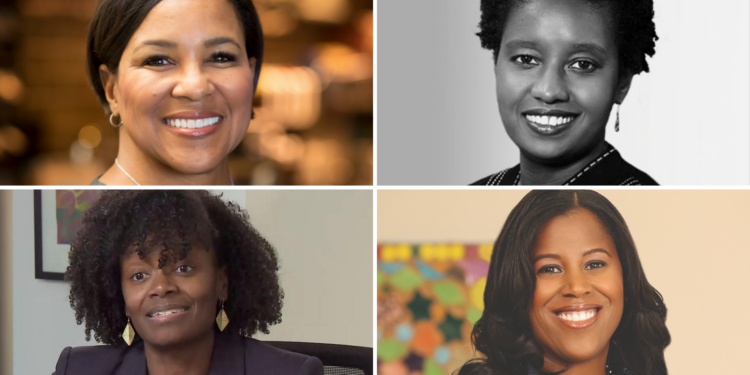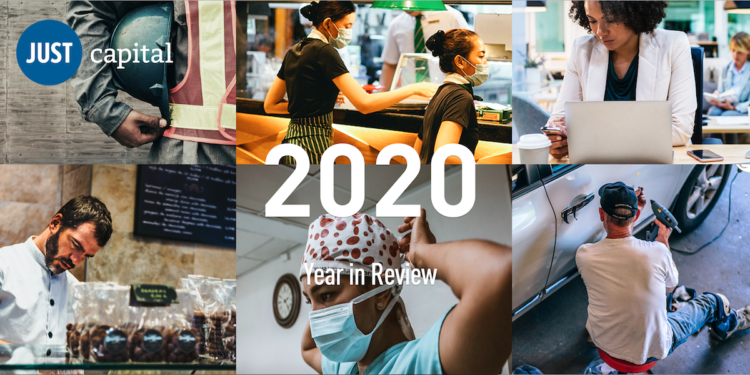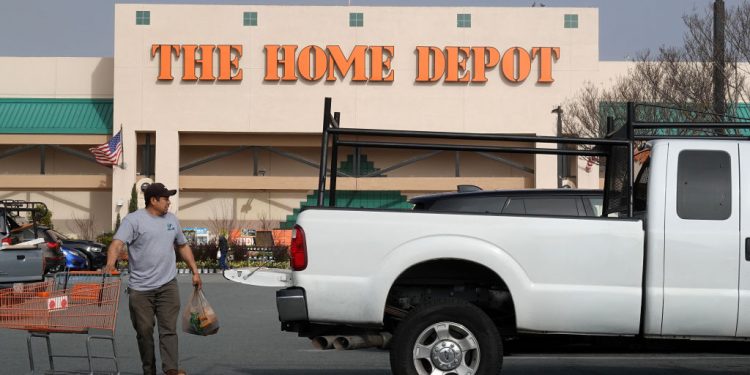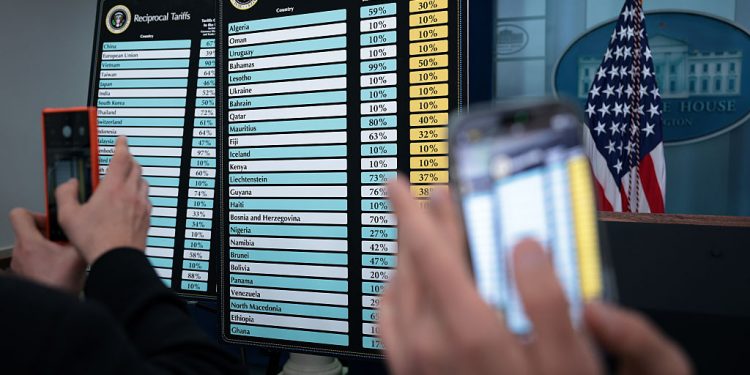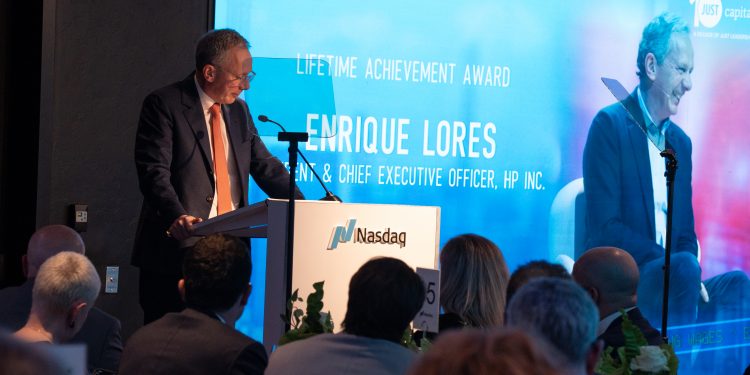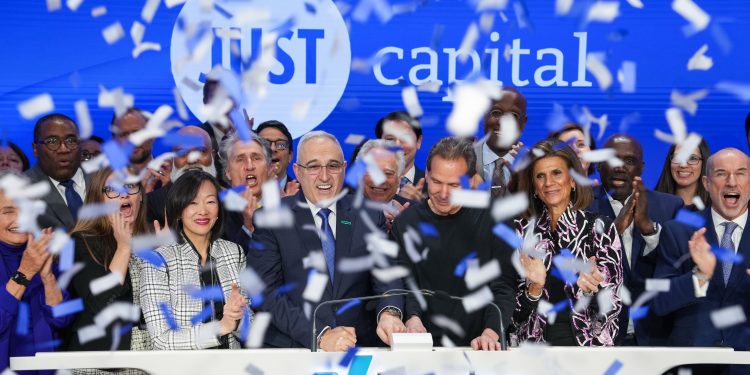Synchrony’s CHRO Explains How COVID-19 Transformed How the Company Works – and Why It’s Encouraging All Employees to Work From Home Even After the Pandemic
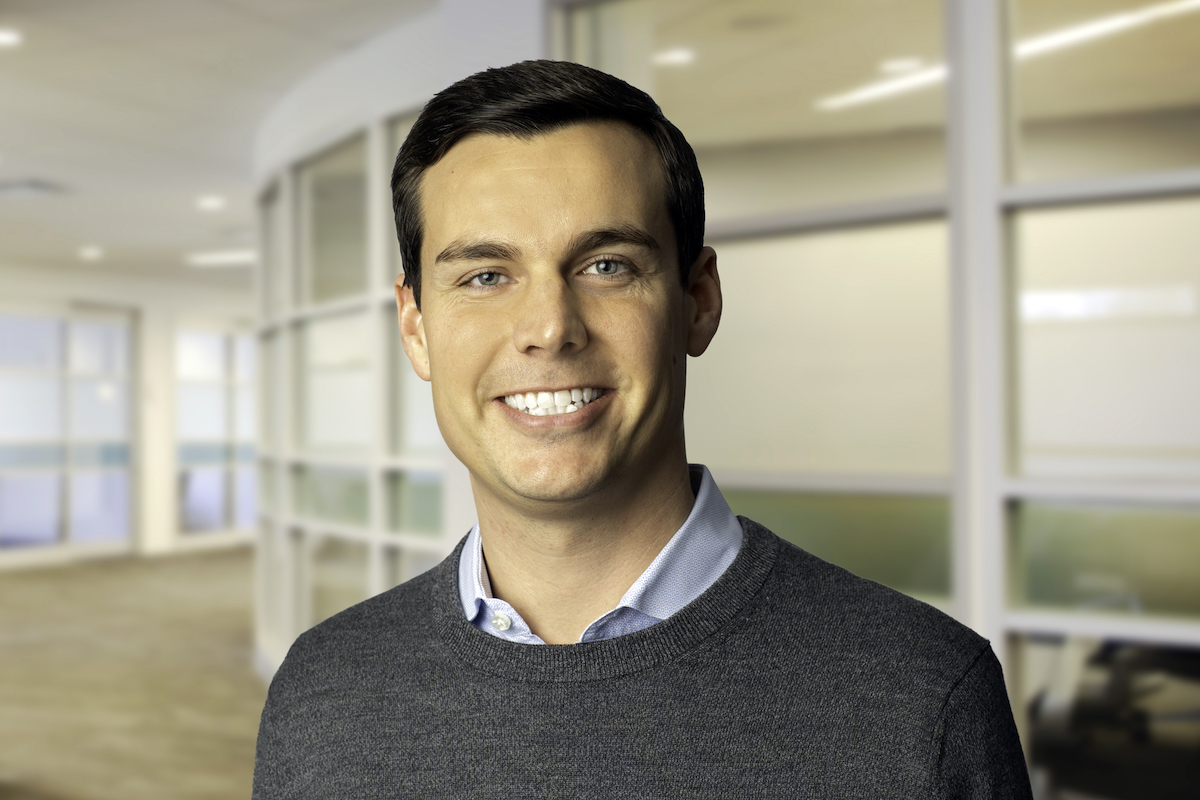
Synchrony’s head of HR, DJ Casto. (Courtesy of Synchrony)
We are days away from the year anniversary of the official declaration of the COVID-19 global pandemic, and with its end seemingly on the horizon, corporate America is considering what policies and insights developed over the past year are going to stay. Synchrony Financial is going all in, where every one of its 16,500 employees will continue to work from home at least part of the time. And the typical office structure will be gone. When employees are able to return to physical locations, they will be able to reserve desks at “hubs,” and a full 40% of real estate square footage across the country will be reduced.
Synchrony (ranked 20 in the JUST 100) is the United States’ largest provider of private label credit cards, with partners like Amazon, Lowe’s, and PayPal, and a significant portion of its workforce works in customer service. That meant the transition to fully working from home required significant adaptation to ensure that technology, including security, performed at the same level it would in an office.
Its chief human resources officer, DJ Casto, worked closely with his CEO, Margaret Keane, and president, Brian Doubles (taking over the chief executive role on April 1), in transforming the company and preparing it for a radically different post-pandemic future. It helped that as a parent of two young children, he could relate to the challenges many of his employees were facing. A new work-from-home approach for the entire workforce required new benefits, and Casto and his team focused on how to help Synchrony’s parents adjust.
As a consumer credit company, Synchrony took a significant financial hit with the onset of the pandemic and had to rethink how it would bounce back. Investors have been optimistic since its Q4 earnings report in January, and its stock has outperformed the S&P 500 since then. When Casto and I talked at the end of last year, however, he was insistent that while the post-COVID approach to work will have cost benefits, its primary driver was employee feedback gathered regularly from the past year.
Employees read in an internal memo from September: “As we manage in the short-term to deliver on our long-term strategy, we must align our expenses to the resizing of our business and economic realities. But this strategy is about more than physical buildings, it is about a new way of working.”
Casto had much to say about how the necessities of the COVID-19 pandemic pushed Synchrony in new directions, but that this new approach opened his, his team’s, and employees’ eyes to an entirely new way of working, one that is going to outlast the virus.
The following interview has been edited for length and clarity.
JUST Capital: When did this idea of a hybrid model of working, come into play like, “Hey, maybe we’re going to make some permanent changes here.”
DJ Casto: It’s interesting, as you ask us to take a step back and reflect. All companies had to go through what I would call a cultural stress test, where the companies that performed really well through this pandemic are the ones that leveraged their values. And we all had our values up – we introduced our values at new manager assimilation days, or say them at a town hall – but it’s in these really dynamic times, like what we’ve lived through in 2020, that you get to see does a company really live its values.
And I think for Synchrony, we did. It allowed us to build an even more meaningful and personal relationship with our employees, even though we’ve all been at home and dispersed. In the early days of the pandemic, our CEO, she was brilliant about this, had us focused on the No. 1 priority, our employee safety, and then ensuring that we were meeting our partners’ needs. Our partners are Amazon and PayPal, and so we have to make sure they’re getting all of the support they need and, and that our cardholders are getting the support they need because a lot of them use our cards for all the essentials they needed during the pandemic.
And so at a time that we focused on our employees, we also stood up eight work streams that really helped us reprioritize.
[The work streams are built around “accelerating business growth; the operating model of the future (including remote work flexibility); helping businesses navigate the future; changing the way we work to drive more agility, empowerment, and faster decision-making; and advancing diversity, inclusion, and equity.”]
We had set goals in January, but no one had put into the process that we’d have a global pandemic and social unrest! So we all took a step back and our CEO, Margaret, asked our president, Brian Doubles, to stand up these work streams to make sure we had real clarity around what we were focused against. They were around what our customers and employees need now, and then also envisioning what they would need post-pandemic. That was interesting because I felt I can’t even imagine what it’s going to be like post-, but it allowed us to have some clarity in the midst of the storm.
We were blessed – we were able to get 100% of our workforce home, which a lot of companies couldn’t do. And with our chief information officer’s support, everyone was able to get a Chromebook. This was in about three weeks.
We did a pulse survey a couple of months afterwards, asking: Do you have the support you need? What are other things we can be doing? What’s working and what’s not working? We got a lot of the basics, like hey I need some support with internet connectivity, or I need a better work at home setup. But then we started to unpack it, and surprisingly 85% of our workforce in those early days told us that they were interested in having a more permanent work at home arrangement. That is what prompted this whole workstream led by Brian.
Putting all the real estate on a map
JUST: As someone who has a young family, how did these results personally make you feel?
Casto: It registered with me a lot. I’ve always done a two to three hour commute, total for the day. I had more of a traditional Monday through Friday in the office and I would build relationships pre-COVID by having a coffee or going into someone’s office, making the connection on a personal level. And what I started to hear from my employees is that although it was tough and we were trying to figure it all out, there were these moments that we’ve gotten back in our lives that were really important to us.
For example, typically I would have left awhile ago, while Liliana, my oldest, is still sleeping, and I would have gotten back and she would probably be in bed. Now, after this call, I can pop out and get a coffee and I get to see her. Those small moments really matter. We certainly heard this through our employees that, hey, this, this, this could work for me – I meet my personal challenges and my professional career advancements all from home. You’ve got to remember a lot of our employees are contact center associates helping to support our cardholders. I think what they saw was if I removed the commute, if I remove the gas dollars associated with that, if I think about the life complexities that I’m helping to manage, if I can get my office set up the right way and I can get the some rules set up for my family, then I can have a better quality of life.
And so we took all of our real estate, we put it up on a map, and question one was, Are we in the right areas for the talent we need? The good news is when we IPOed and separated from GE about six years ago, we had done some of this work. We didn’t feel like we’d needed to get out of any of our areas, but what we had done is we had boxed ourselves in to be very traditional in how we were filling certain roles and certain jobs in certain areas – Oh, that’s a headquarters role. It has to be based in Stamford. Or oh, this job supports our retail card client. It has to be based in Alpharetta, Georgia.
And so what we said is we’re in the right markets, but we have to expand our thinking on are we maximizing the markets we have and allowing individuals to compete and win more opportunities across the map. As we started to think through this, we said, OK, we have to make sure we maintain our culture, or actually is there a way to amplify our culture coming out of this?
So what we did is we pivoted from a site construct to transforming to a hub strategy. We called them “hubs” deliberately because we still want people to have a cultural connection to some area. We don’t want our workforce dispersed everywhere because we want a sense of identity that there is a community that you can connect with.
How to use a ‘hub’
JUST: When you mapped this out, was the process something like instead of having three floors in this building, we have just one and it’s a hub now, or we’re closing down this location and we’re just going to have this one hub to represent the whole region?
Casto: It’s like you were part of the working team with us! Let’s use Chicago for an example. We used to have two different office spaces in Chicago and we’re combining them. We’ve communicated to that group that it’s when you need to come together for collaboration, for some of our innovation sessions that we do. We still need a home base, and so that is being reimagined where you leverage technology to purposefully use the space.
We’re going to launch a hoteling app. Let’s say you and I are working on a project together where we’ve been doing everything virtually, and then we both hit a roadblock. We’re like, you know what, we just need to get in a room and think about how we envision this next step. We’re both available next Wednesday. Well, let me get on the app, I’ll book a collaboration room and oh, why don’t you invite Angie as well? I think she’ll provide great perspective. I can even book space for a couple days.
Ninety-five percent of our workforce will still have access to Synchrony’s physical space. But we’ve reduced that footprint quite a bit – we reduced our real estate square footage by about 40%. We didn’t start the project as a cost initiative, but it did allow cost to come out of the system.
JUST: So you’re in a situation where there is going to be cost cutting on real estate, some out of necessity, but something that was also happening simultaneously is not only keeping benefits for the workforce, but enhancing many of them. How did you balance that, where the workforce is actually gaining from this, in addition to just keeping things running efficiently?
Casto: Agility became foundational to the company. The other thing that we did was lead with authenticity. We were just honest with the workforce. When we started on this, Margaret held bi-weekly calls with with the entire workforce, they were called Ask Us Anything. You could ask the CEO and her leadership team what was on your mind, and it just drove this greater level of kind of transparency, a greater personal connection.
We said, 85% of you said you might want to think about this in a more permanent way. We’ve stood up a working team to really unpack it. We’re not allowing costs to be the initial driver of this initiative, but it’s going to be an output of it. We can reduce our real estate, but we should thoughtfully figure out how do we do that while still meeting your needs. Then we told them we were doing a review. It did get people nervous a little bit, around what does that mean and what does that look like? We said we’d be taking your input and feedback and we’ll get back to you with what we’ve learned and what our plan is.
Rethinking childcare while working at home
JUST: I would imagine that as you’re listening to employees throughout this time, that in addition to some of the benefits of the flexibility of working from home, that a lot of challenges would arise for employees, as well. Particularly I’m thinking of working mothers or young parents in general, like taking care of a baby or trying to be a teacher for their child learning remotely.
Casto: Well, the good news is I have a case study behind my door with a two year old and a three month old to help me navigate. My wife was definitely my truth teller in being able to tell me about the complexities. Seventy-four percent of our contact center associates are women, so you’re identifying a real concern we had about the sustainment of this longer term.
We had a daily stand-up within HR, and we started to tackle what are the benefits that are working what are the benefits that need to be expanded, and what are the benefits that we haven’t even thought of? Childcare was opportunity one.
We had emergency childcare where people could use up to 10 days leveraging a third party that we had brokered this with, but guess what? Those were in daycare centers and daycare centers were closing down at a rapid rate because of COVID. And so in an agile fashion, we stood up a reimbursement program. We said to our contact center associates that we know you’re going to be dealing with a lot of different complexities and things are going to fall through, but you’re going to need to be able to show up and be on calls for our cardholders every day. And so we will reimburse up to $100 for any babysitter that you can find, for up to 60 days. We won’t micromanage this. We made it real simple – it could be your mother-in-law, or it could be your neighbor, because a lot of people were really struggling with childcare. That’s something we’re going to continue to go forward with.
We’re going to make the change around allowing a more permanent work at home arrangement, and so our benefits have to also support that new model.
Determining what benefits would outlast the pandemic
JUST: What was the litmus test for what was going to be a temporary solution for the pandemic versus something that we need to carry forward permanently?
Casto: We launched everything in an MVP type fashion – minimum viable product, and we were honest with our employees. You said you need it, we’re getting it out, and it’s test and learn. I’ll give you, childcare as a great example. We upped the days three times – we went from a base of 10 days to 25, from 25 to 35, and then from 35 to 60. We were just testing and seeing how many employees were using it.
I’ll give you another good example, and it talks to the stress that parents were involved in. You certainly could feel and see the fatigue start to really catch up with folks. We did another series of listening sessions and parents just needed some support. A parent in one of the Ask Us sessions said, it’s stressful for us, we typically had summer programs that our kids could go to, and all of those have been canceled. They didn’t even ask for anything, it was just a statement, but then our team got to work and said, we could maybe create in-house program for the summer. Liz Heitner, on my team, made a great cross-functional team of Synchrony employees that put together a story time for kids program, that’s almost like an internal YouTube that allows you to plug in. It’s now morphed to tutoring.
I think 2021 is still going to be a bit of a test and learn year. We’re all going to have to push ourselves to really think about how to support our employees differently and more holistically. There’s a responsibility that has shifted from where I’m not just responsible for an employee, but I’m responsible for everyone in that employee’s life at home.
A focus on employees’ mental health
JUST: On that note, another issue that has kind of come to the forefront for a lot of companies during this time has been the mental health of their employees.
Casto: Mental wellness is something that we started trying to think differently on even a year ago before the pandemic hit.
Looking at a contact center associate, we might be their first job that’s allowing them to kind of grow their career. A frontline manager may not be equipped to deal with an employee that’s having some real personal issues at home, is struggling with anxiety or depression, or is really trying to figure out how to pay the bills.
And so we launched in our Kettering, Ohio office in late 2019 the concept of a life coach. So we partnered with Optum and hired a counselor named Shawna Mikesell. She was dedicated to the site and would walk the floors, get to meet the employees, and they would go to her. She would help employees find both financial counseling and mental health resources, and she was clinically trained to. I think that is a place where a lot of corporate America needs to continue to invest. We’re going to need more of these life coaches. If you’re going to tell people that they can bring their full self to work every day, you’ve got to have the support program and resources to help them navigate it all.
How to create stakeholder value
JUST: Certain shareholders aren’t always open to investing in a workforce in a significant way. How do you think of implementing new policies in this sense? How do you look at balancing trade-offs?
Casto: What we’ve been anchored on is you have to be really prudent and smart on the trade-offs. The investments we’re making in flexibility, in new benefits offerings, the trade-off is we’re reducing the amount of space that we have and that overhead cost.
I would hope our shareholders would want us to continue to invest in our employees in a way that’s going to allow them to be more productive, more innovative, more creative – which hopefully they see in the total shareholder return in the longer term.
If you’re able to continue to invest back into employees, it’s going to allow our partnerships to get richer, and employees to be more committed. You’ll see the returns, hopefully, through the innovation that those employees drive. And we’ve seen that even in the pandemic. We launched two brand new partnerships during the pandemic, with Verizon and Venmo, completely done through this digital way. Our employees all stepped up. Those are just two examples, but I think that’s how it all ties together.
There are always trade-offs, but they should always be done in a way where you ask how can we figure out a way to self-fund and invest in our employees? Because it always pays off in the end, if you take care of your employees in an authentic and meaningful way.
